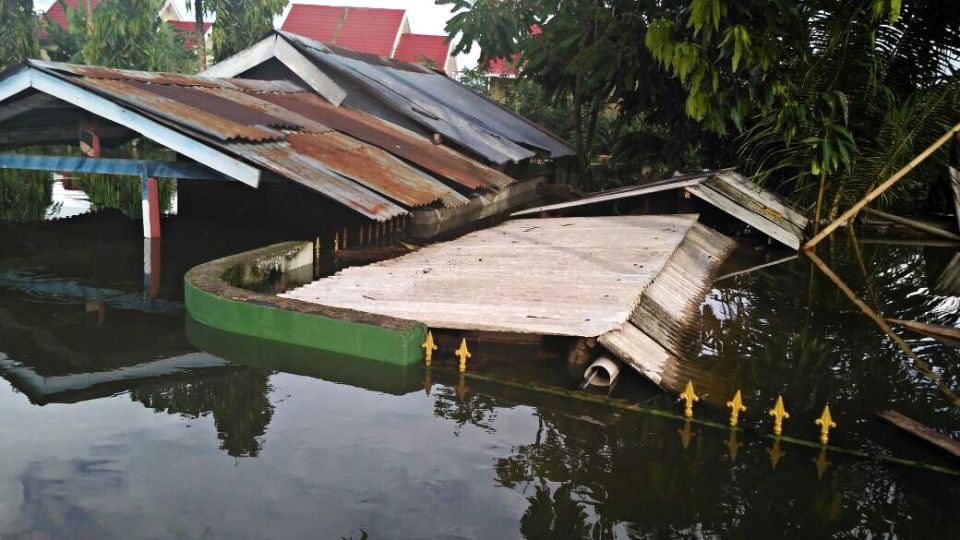November 1, 2022
JAKARTA – A new study has found that some cities in Indonesia are among the places that “climate shifts” have occurred the most, in that climate change has strongly influenced daily temperature and weather phenomena.
The nonprofit-news organization Climate Central recently launched the Global Climate Shift Index (CSI) that tried to quantify the local influence of climate change on daily temperatures around the world.
Climate Central director of climate science Andrew Pershing said that the index was created by analyzing the frequency of different temperatures in today’s climate, taking into account the effects from industrialization and land-use changes.
“Our Climate Shift Index measures how climate change boosted the odds of encountering a particular day’s temperature,” Pershing said in an email to The Jakarta Post on Saturday.
The first global CSI analysis was conducted from Oct, 1, 2021 to Sept. 30 on more than 1,000 cities across the world. The results of the analysis were published in the report titled “365 Days on a Warming Planet” which found that 96 percent of the world population or about 7.6 billion people experienced daily temperatures that were made warmer by climate change.
However, not all regions experienced climate change impacts the same way as they have different Climate Shift Index scores, measured on a range of -5 to +5. Higher index scores meant that the observed temperatures had become more common as a result of climate change while lower and even negative scores meant that climate change had made the observed temperatures less likely.
The report found that the Malay Archipelago — which includes Indonesia, the Philippines, Singapore and Papua New Guinea –, north and central-west Brazil, Arabian Peninsula, Horn of Africa and Mexico experienced the strongest impacts of climate change to their local temperatures.
Among the 24 Indonesian cities studied in the report, four cities have high levels of CSI and recorded most days that are affected by climate change in the Asia region. Makassar, South Sulawesi’s average daily CSI score is 3.8 with 279 high CSI days; followed by Banjarmasin, South Kalimantan, at 3.52 with 254 days; Batam, Riau Islands, at 3.5 with 259 days; and Tasikmalaya, West Java, at 3.12 with 223 days, respectively.
The report noted areas that experienced high levels of climate shifts tended to be locations close to the equator and the coasts.
“These places have smaller day-to-day changes in temperature, so warming trends have a bigger influence,” Pershing said.
Pershing said that areas with high levels of climate shifts were “unlucky” to bear the brunt of climate change as the temperate regions although they were major emitters such as the United States, the European Union, Russia and China had fewer days of climate shifts than those near the equator.
He said that as the Climate Shift Index had shown the places that had felt the biggest impacts of climate change were also those that would benefit the most from reducing carbon pollution.
“These are the conditions that we need to prepare in order to keep people safe and keep economies moving forward,” Pershing said.
Responding to the Climate Central report, Meteorology, Climatology and Geophysics Agency (BMKG) acting climatology deputy Dodo Gunawan said that while the BMKG had also found that climate change impacts had materialized in the country, the Climate Central report was not yet used as a tool by the Indonesian government.
“Generally, we can confirm that extreme weather events nowadays have become more frequent with higher intensity than before, which correlates to climate change,” Dodo told the Post on Saturday.
Based on the BMKG’s observation of data from 1981 to 2018, Indonesia experienced about 0.03 degrees Celsius annual temperature rise or up to 0.9 degrees Celsius within 30 years.
Data from the National Disaster Mitigation Agency (BNPB) showed that Indonesia experienced a rising number of natural disasters in recent years. BNPB recorded 1,694 disasters in 2015 and then the figures increased over the years to 5,402 in 2021.
Meanwhile, National Research and Innovation Agency (BRIN) professor of meteorology and climatology Edvin Aldrian questioned whether the Climate Shift Index by Climate Central could paint an accurate picture of the impacts of climate change in Indonesia, pointing to the study’s limited time frame of one year.
He pointed out that in 2021 and 2022 Indonesia experienced wet weather due to the La Nina phenomenon, which contributed to the volatility of the weather phenomena in the past year.
He also said that cities in Indonesia, including the ones studied in the Climate Central report, also had very diverse conditions, such as Makassar being on the coast but also near to mountains, making it prone to volatile weather.
“I think we should still refer to the IPCC [Intergovernmental Panel on Climate Change] report instead, because of its longer research periods of 10 to 30 years,” Edvin said on Saturday.
IPCC’s Sixth Assessment Report found that emissions from human activities were responsible for the increase in global temperature by around 1.1 degrees Celsius since the 1850 to 1900 period. (ahw)


